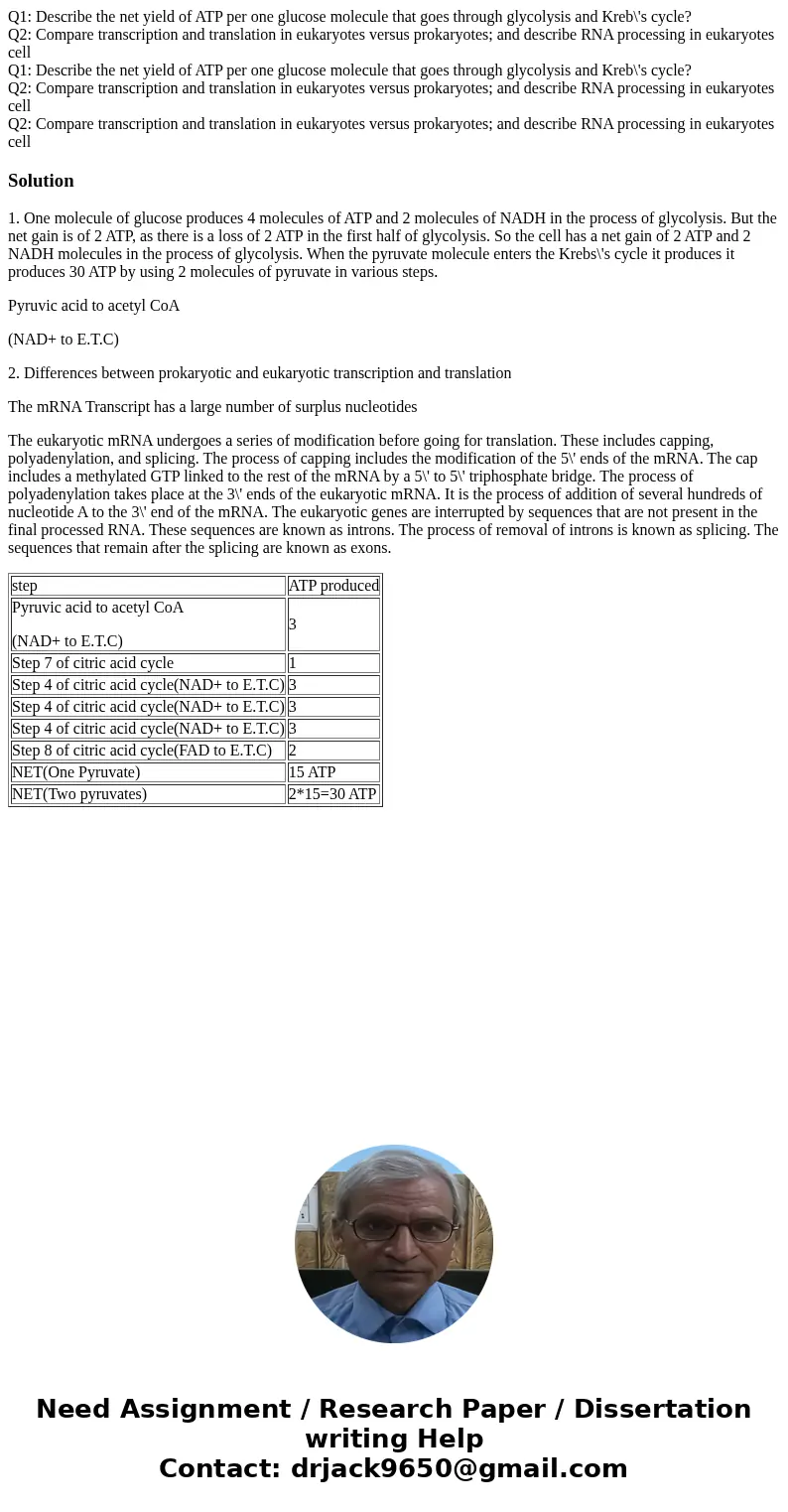Q1 Describe the net yield of ATP per one glucose molecule th
Solution
1. One molecule of glucose produces 4 molecules of ATP and 2 molecules of NADH in the process of glycolysis. But the net gain is of 2 ATP, as there is a loss of 2 ATP in the first half of glycolysis. So the cell has a net gain of 2 ATP and 2 NADH molecules in the process of glycolysis. When the pyruvate molecule enters the Krebs\'s cycle it produces it produces 30 ATP by using 2 molecules of pyruvate in various steps.
Pyruvic acid to acetyl CoA
(NAD+ to E.T.C)
2. Differences between prokaryotic and eukaryotic transcription and translation
The mRNA Transcript has a large number of surplus nucleotides
The eukaryotic mRNA undergoes a series of modification before going for translation. These includes capping, polyadenylation, and splicing. The process of capping includes the modification of the 5\' ends of the mRNA. The cap includes a methylated GTP linked to the rest of the mRNA by a 5\' to 5\' triphosphate bridge. The process of polyadenylation takes place at the 3\' ends of the eukaryotic mRNA. It is the process of addition of several hundreds of nucleotide A to the 3\' end of the mRNA. The eukaryotic genes are interrupted by sequences that are not present in the final processed RNA. These sequences are known as introns. The process of removal of introns is known as splicing. The sequences that remain after the splicing are known as exons.
| step | ATP produced |
| Pyruvic acid to acetyl CoA (NAD+ to E.T.C) | 3 |
| Step 7 of citric acid cycle | 1 |
| Step 4 of citric acid cycle(NAD+ to E.T.C) | 3 |
| Step 4 of citric acid cycle(NAD+ to E.T.C) | 3 |
| Step 4 of citric acid cycle(NAD+ to E.T.C) | 3 |
| Step 8 of citric acid cycle(FAD to E.T.C) | 2 |
| NET(One Pyruvate) | 15 ATP |
| NET(Two pyruvates) | 2*15=30 ATP |

 Homework Sourse
Homework Sourse